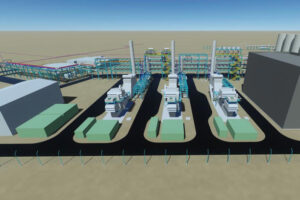Perceptions of wind farms improve after installation, research shows
A study of community views on a controversial wind farm development in Cornwall has found perceptions changed after construction. It suggests fear of living near wind farms can reduce over time, say researchers
As a renewable energy source, wind power has the potential to contribute towards international agreements to reduce carbon emissions.
Following the 2009 EU renewable energy directive, the UK proposed to derive 15% of its energy from renewable sources by 2020. As a result, in the last two decades, UK onshore wind power has become an increasingly important source of energy, generating 2.5% of the country’s electricity needs in 2013.
Despite strong public support at a national level, wind farm projects in the UK are often controversial, with significant local opposition to new developments due to concerns about their impact on the landscape and human health, as well as fears regarding the potential impact on wildlife and tourism.
Such opposition can delay and prevent the progress of wind farm projects. However, a number of studies have indicated that community perceptions towards wind farms are more favourable in the years following installation. Assessing public opinion towards these developments is important if wind power is to continue to be part of efforts to increase renewable energy use.
A study by researchers from Plymouth University used the Roskow Barton wind farm project in Cornwall as a case study, assessing community perceptions towards the wind farm prior to and five years after development. Although relatively small in scale, the wind farm was a highly contentious development with considerable local opposition — two planning applications were refused before the project was finally allowed to proceed.
The researchers conducted interviews with 52 randomly selected residents living within a 3km radius of the wind farm site. Prior to the turbine construction, 18 (34.5%) of the residents interviewed had objected to the proposals for a variety of reasons, including visual, noise, traffic and wildlife concerns. Six additional stakeholders were also interviewed; these included a local planning officer, a member of the Ramblers Association, two wind power operatives and a local parish councillor. Additional information was derived from Cornwall Council’s planning database, planning officer reports and appeal decisions on the development.
Five years after construction, 14 residents (27%) still disliked the wind turbines; however, the majority of residents had either neutral (54%) or positive views (14%). This included a number of residents who showed a complete change of attitude from opposition to favouring the wind farm. Half of the original 18 objectors changed their opinion to either ‘tolerate’, be ‘in favour’ of or be ‘strongly for’ the wind farm, suggesting a substantial change in attitudes post-installation.
Following construction, only six residents (12%) considered the visual impact of the turbines a concern, with the majority stating they are now used to seeing the turbines in their area. Noise impacts were the biggest concern, with 30% of residents stating that turbine noise kept them awake at night or was ‘irritating’.
Despite there still being mixed opinions on the wind farm, the community as a whole had become accustomed to the turbines and attitudes had become favourable. This finding echoes similar studies on wind farm developments and community impacts. The researchers concluded that wind farm developments should consult with communities over health, socio-economic and environmental concerns prior to turbine construction.
Collaboration can help to foster trust with communities and alleviate fears associated with wind farm development. Further research and policy approaches could explore the viability of using incentives, such as reduced electricity bills, for households in close proximity to wind farms in order to increase the support.
- Source: ‘Science for Environment Policy‘, September 2, 2016, Community perceptions towards a wind farm improve after installation. European Commission DG Environment News Alert Service, edited by SCU, The University of the West of England, Bristol. To access articles and to subscribe, please go to http://ec.europa.eu/science-environment-policy
Photo by fionaandneil 















